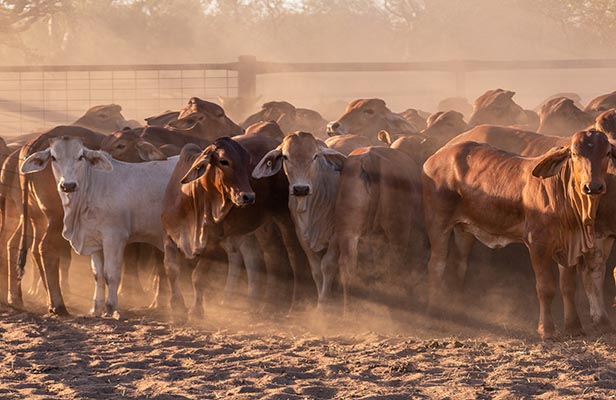The Art of Raising Constance Cattle: Specialist Suggestions on Nutrition, Housing, and Well-being
Master the Art of Food Preparation With Yard Fed Meat
In the world of culinary expertise, understanding the art of food preparation with grass-fed meat holds a prominent position. From the tender appearance to the durable flavor profile, grass-fed meat offers a canvas for cooking creative thinking.
Benefits of Grass-Fed Meat

When selecting grass-fed meat, customers can benefit from its greater levels of omega-3 fatty acids and antioxidants compared to traditionally increased meat. Constance Cattle. Omega-3 fats are vital nutrients that support mind health, lower swelling, and advertise heart wellness. Grass-fed meat is understood to have up to five times a lot more omega-3 fatty acids than grain-fed meat, making it a much healthier choice for those looking to increase their consumption of these useful fats
In addition to omega-3 fats, grass-fed meat is likewise richer in anti-oxidants such as vitamins E and C, in addition to beta-carotene. Anti-oxidants play a critical duty in shielding cells from damage triggered by cost-free radicals, which can add to numerous chronic illness and accelerate aging. By choosing grass-fed meat, consumers can not just appreciate an extra nutrient-dense and savory healthy protein source but additionally sustain their general health and wellness and well-being.
Incorporating grass-fed meat right into your diet plan can be an easy yet effective method to improve your nutritional consumption and profit of omega-3 fats and antioxidants that are normally plentiful in this sort of meat.
Best Cooking Methods
Utilizing ideal cooking methods is important to protect the nutrient profile and boost the taste of grass-fed meat. When cooking grass-fed meat, it is very important to bear in mind that it is leaner than conventionally raised meat, making it a lot more vulnerable to drying if overcooked. To make certain a juicy and delicious result, think about cooking grass-fed meat at a little lower temperature levels than you would with grain-fed meat.
Cooking is a preferred approach for cooking grass-fed meat as it allows excess fat to drip away, avoiding flare-ups that can cause charring. One more terrific food preparation method for grass-fed meat is pan-searing.
Slow food preparation strategies such as braising or cooking are likewise outstanding options for harder cuts of grass-fed meat, as they aid damage down the muscle mass fibers and tenderize the meat. Whichever food preparation technique you select, bear in mind to allow grass-fed meat remainder after cooking to permit the juices to rearrange, ensuring a damp and tender last recipe.
Taste Pairings and Seasonings
To improve the all-natural tastes of grass-fed meat, critical flavor pairings and seasonings play an important role in elevating the total dining experience. Grass-fed meat has an abundant, distinct preference that can be enhanced and improved by meticulously selected ingredients.
In enhancement to natural herbs, seasonings such as black pepper, garlic, and redirected here smoked paprika can additionally raise the preference account of grass-fed meat meals. These flavors supply an equilibrium of warm, sweet taste, and smokiness that can boost the general eating experience. When flavoring grass-fed meat, it is necessary to make use of high-quality salt, like sea salt or Himalayan salt, to draw out the meat's flavors without including unneeded chemicals or ingredients.
Storage Space and Managing Tips
Appropriate storage space and handling practices are vital for keeping the quality and quality of grass-fed meat. When storing grass-fed meat, it is essential to keep it cooled at temperatures below 40 ° F(4 ° C) to prevent bacterial development and spoilage. To extend the meat's service life, think about covering it snugly in parchment paper or butcher paper before placing it in an impermeable container or secured plastic bag - Constance Cattle. Stay clear of storing grass-fed meat near strong-smelling foods as it can take in smells easily.
When taking care of grass-fed meat, it is necessary to practice good health to stop cross-contamination. Wash your hands completely prior to and after handling the meat, and make sure that all tools and surface areas that enter contact with the meat are cleaned and disinfected effectively. In addition, utilize separate reducing boards for meat and vegetables to prevent bacterial transfer.

Top Grass-Fed Meat Recipes
When thinking about the best means browse around here to enjoy the top quality and freshness of grass-fed meat, checking out superior dishes can raise your cooking experience. Grass-fed meat's rich taste and leaner account offer themselves well to a selection of recipes that highlight the natural goodness of the meat.
If you remain in the mood for something lighter, a Grilled Grass-Fed Hamburger offered with fresh garnishes and a side of wonderful potato fries is a scrumptious option. Additionally, a Herb-Crusted Grass-Fed Crown roast roasted to perfection with an assortment of herbs and breadcrumbs is a show-stopping recipe for unique celebrations. These top grass-fed meat dishes showcase the versatility and premium quality of grass-fed meat, permitting you to enjoy its remarkable preference in numerous cooking productions.

Conclusion
Finally, mastering the art of food preparation with grass-fed meat provides numerous advantages, consisting of enhanced dietary value and remarkable taste. By utilizing the very best cooking methods, trying out taste pairings and Check This Out flavorings, and following appropriate storage space and managing tips, you can produce delicious and nourishing meals. Experiment with some leading grass-fed meat dishes to raise your culinary abilities and appreciate the complete potential of this high-quality active ingredient.
When cooking grass-fed meat, it is important to bear in mind that it is leaner than conventionally raised meat, making it much more susceptible to drying out if overcooked. To ensure a juicy and flavorful end result, consider cooking grass-fed meat at a little reduced temperatures than you would with grain-fed meat.
When flavoring grass-fed meat, it is essential to utilize top quality salt, like sea salt or Himalayan salt, to bring out the meat's tastes without adding unnecessary chemicals or additives.
Grass-fed meat's rich taste and leaner profile provide themselves well to a range of dishes that highlight the all-natural goodness of the meat. These top grass-fed meat dishes display the adaptability and superior high quality of grass-fed meat, enabling you to enjoy its superior preference in various cooking productions.